Background
Orchids have been for the longest time, sought after for its aesthetic and medicinal quality in Southeast Asia and all around the world. The national flower that once flourished in its natural ecology and its lucrative cut-flower trade in Singapore that made her the top producer and known internationally in the 1900s occupied 400ha of land at its peak, diminished due to rapid urbanization, land scarcity, and a departure from the agrarian industry.
Today, less than 40ha of Orchid farms that remains account for 3.9% of the US$400 million global orchid trade, occupying almost half of the local agricultural land. In the next decade, the nation will have to compromise another 20ha of Orchid farms as it struggles to find balance in limited agricultural land to strengthen food security.
Thesis
Turning to its evolutionary richness across the different species; orchids have been used as medicinal plants in china, edible tubers in Africa, and socio-political tools in Singapore. People have extracted the essence of plants through various methods for their color, fragrance, and micronutrition comparable to a blueberry. In addition, this richness could even further enhance the recuperative properties of the natural environment on human wellness according to Ulrich Roger in his evidence-based design through the multitude of uses as a form of horticulture and therapy.
The Orchid Cooperative is a response to the nation’s effort in revitalizing her ailing Orchid industry. The cooperative proposes to re-embed the farms into a series of emerging community horticultural landscapes through the wealth of orchid uses, optimizing and diversifying traditional Orchid cultivation into a shared value chain.
Discarding the traditional model of farming, the Cooperative is anchored by three key thrusts derived from its issues- to synergize multi-stakeholder national interests, support the needs of an aging population, and advancing high-value economic uses.
The cooperative manifests as three typologies in four key nodes situated along a proposed green network connection between Pearl’s Hill and the railway corridor. The nodes of Spooner Road Flats, Kampung Bahru Bus Terminal, Singapore General Hospital, and Outram MRT station have been chosen for their diverse characters that demonstrates the diversity and richness of orchids beyond their aesthetics.
Conclusion
The orchid cooperative probes us to think from a new perspective of how farming in a land-scarce country could be sought after within a shared value chain; not just for economic benefits but also to enliven the community and public spaces around us.
“Bloom or gloom? Orchid farm owner weighs prospects ” / ” Make Orchids flourish again”
Collection of initiatives from nParks – Straits Times, 2018,
“The more Garang Farmers will look for new ways of farming (…)”
Sungei Tengah Orchid Farmer
Thesis Statement // The Orchid Cooperative proposes to revitalizes the ailing industry by re-embedding the farms into emerging community horticultural landscapes, and through the wealth of orchid uses, optimize and diversify its cultivation into a shared value chain. Discarding the traditional model of farming, the Orchid Cooperative is anchored by three key thrusts – to synergize multi-stakeholder national interests, support the needs of an ageing population, and advancing high value economic uses.
“View through the window may influence recovery. “
Ulrich Roger, 1984
The three cooperative typologies manifests as four nodes along a proposed network between Pearl’s hill and the railway corridor. The operation of each part is interdependent of the other for the entire cooperative to be successful. The nodes of Spooner Road Flats, Kampung Bahru Bus Terminal, Singapore General Hospital and Outram MRT have been chosen for their diverse characters that amplifies the diversity and richness of orchids beyond aesthetics.
Cooperative I demonstrates the engagement of community stakeholders in need through the alteration and rejuvenation of the lease expiring (Romesh, 2012) Spooner Road Railway flats by 2021. The community of rental flat resident, aged and halfway home residents in the immediate vicinity brings a rich stakeholder group that has direct benefits to communal activities relating to horticulture. Expanding on the principles of horticultural therapy, this node focuses on non-institutitional, less individualized, group activities.
Cooperative II reinforces the principles of nature and its healing properties (RS Ulrich, 1984) by proposing a park connector that cuts through the future Singapore General Hospital that has a strong focus on a green campus. It demonstrates the expansion of facilitating healthcare through nature as the idea of horticulture and therapy has been growing in recent years as more therapeutic gardens started sprouting up, and educational institutions began offering courses in facilitating such aspects of healthcare.
Cooperative III – The Outram Orchid Cooperative demonstrates the synergy of biocultural and bioprospecting interactions of Orchids, and the interests of agrifood ecosystem springboard. Known for a long evolutionary history and roles such as anthropological symbolism, traditional applications in medicine, this facility located at a high traffic juncture between Chinatown and SGH deals with the post-processing of the 90% of Orchid surplus from the entire cooperative and beyond.
Cooperative III – Kampung Bahru bus terminal demonstrates a multi-stakeholder synergy of transport, environmental and nature authorities, while enhancing the growth of Orchids to drive down its costs of production. It faciliates the crowd sourcing of liquid carbon dioxide using vehicles and passive ambient air capture technology to extract CO2 from ambient air, and converting them into a mist form to enhance the growth and yield of the orchids.

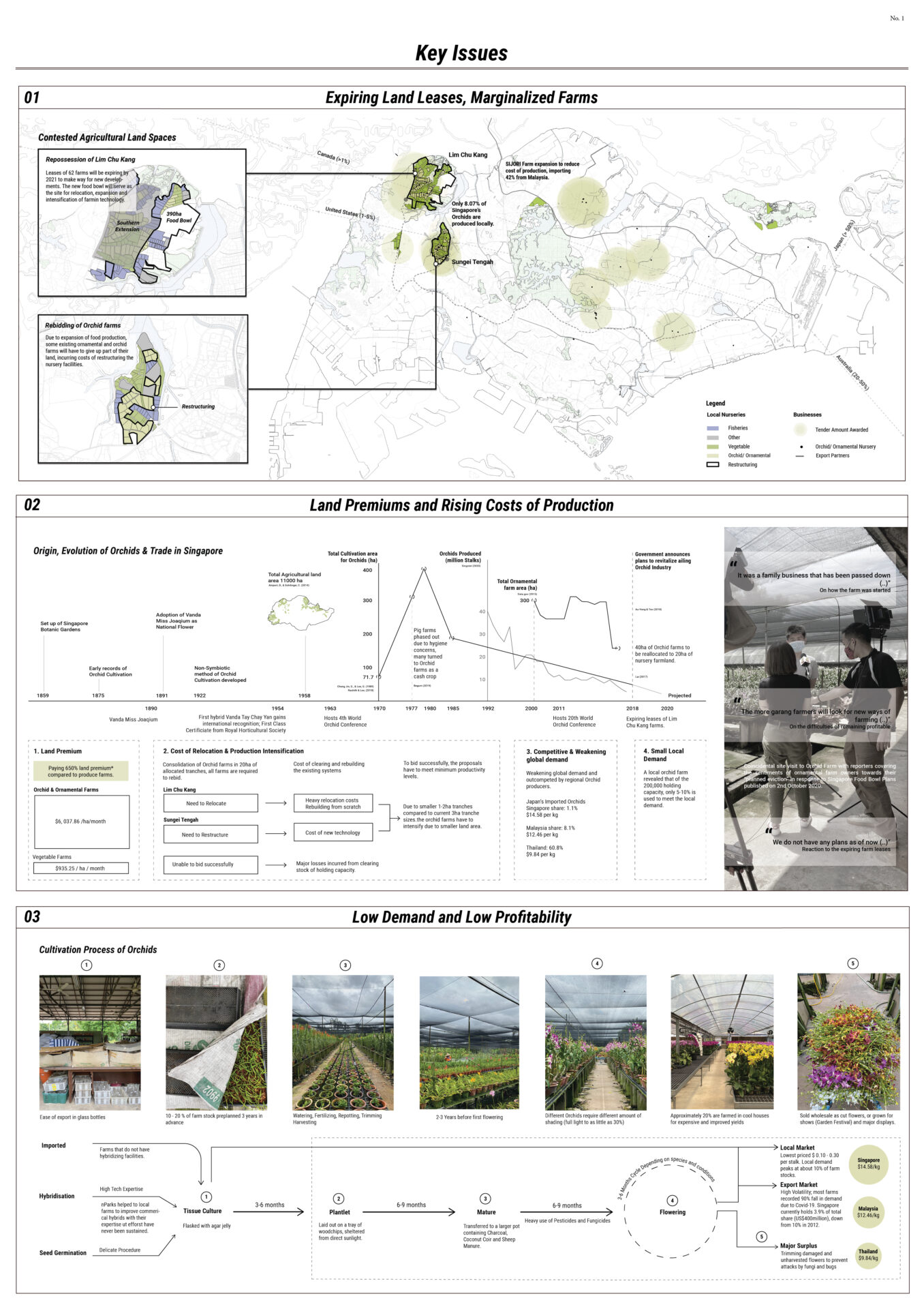

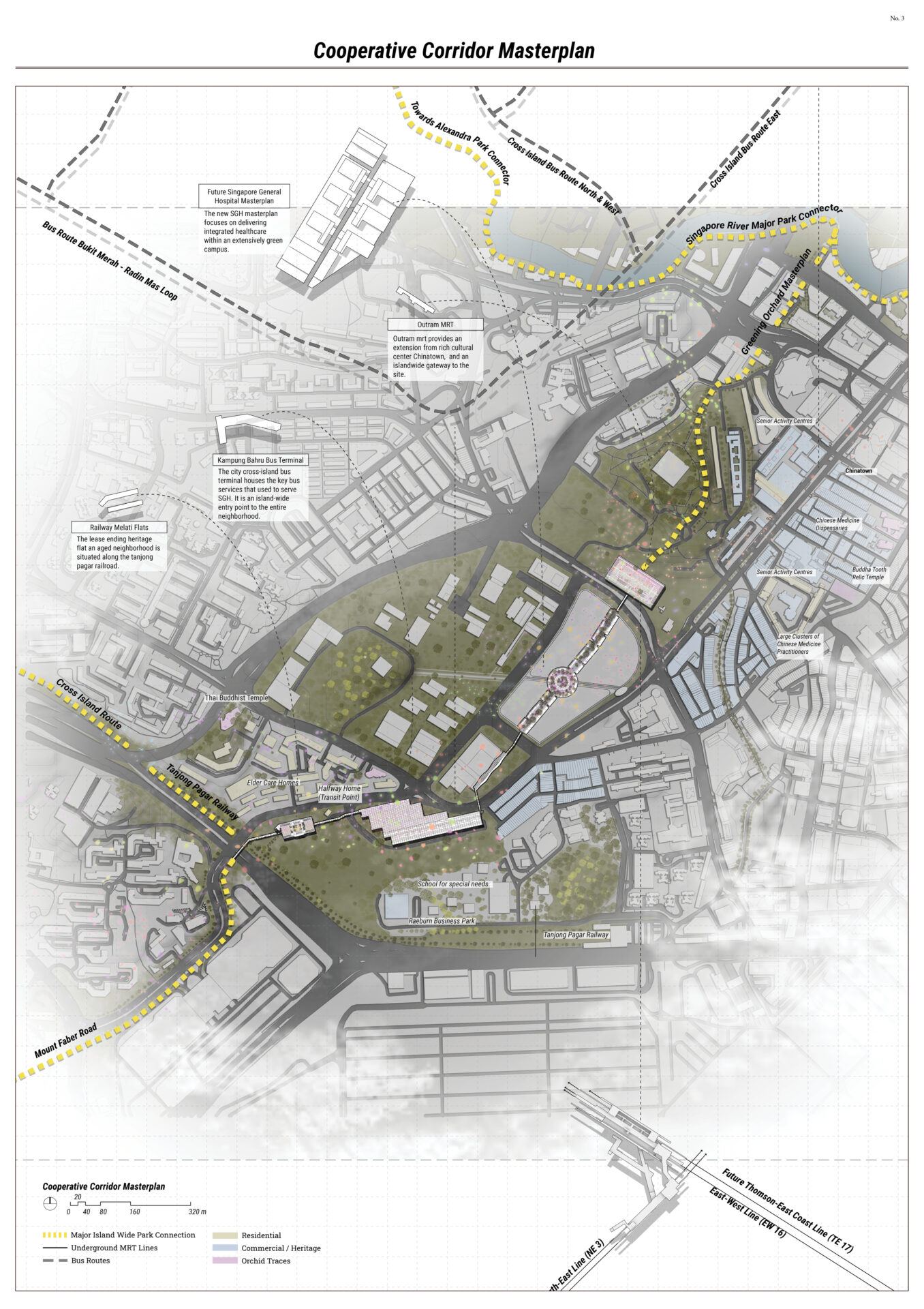
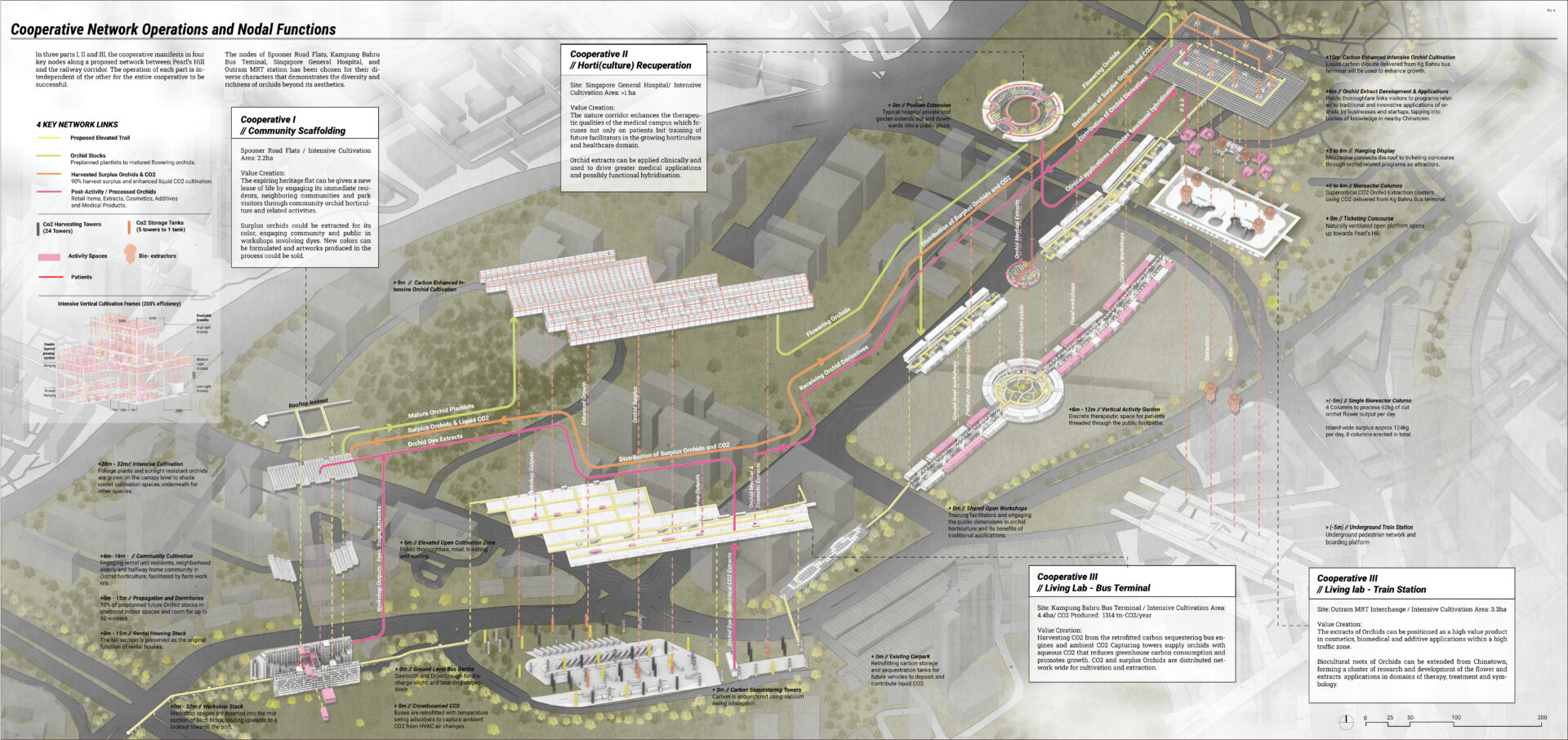
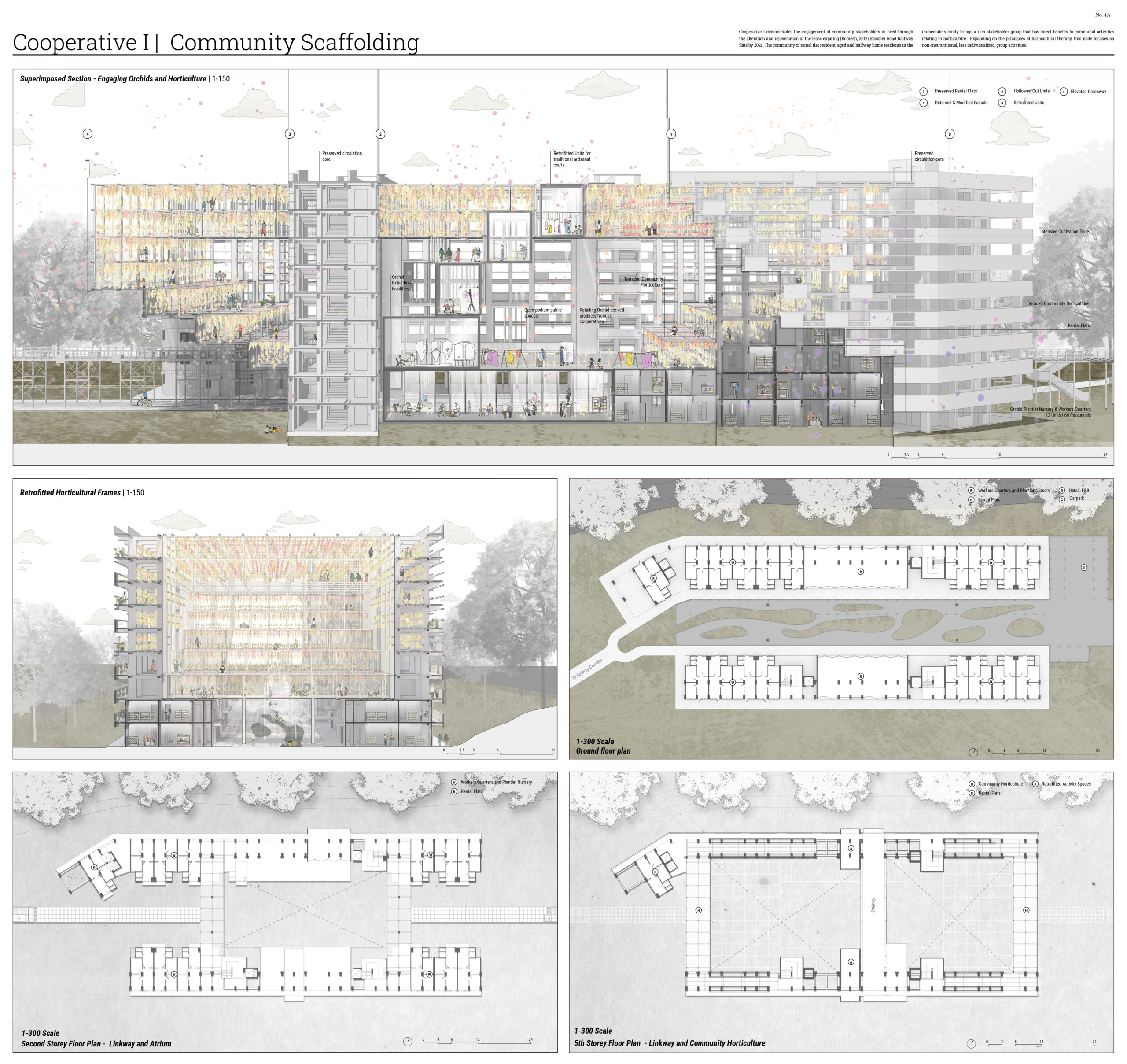
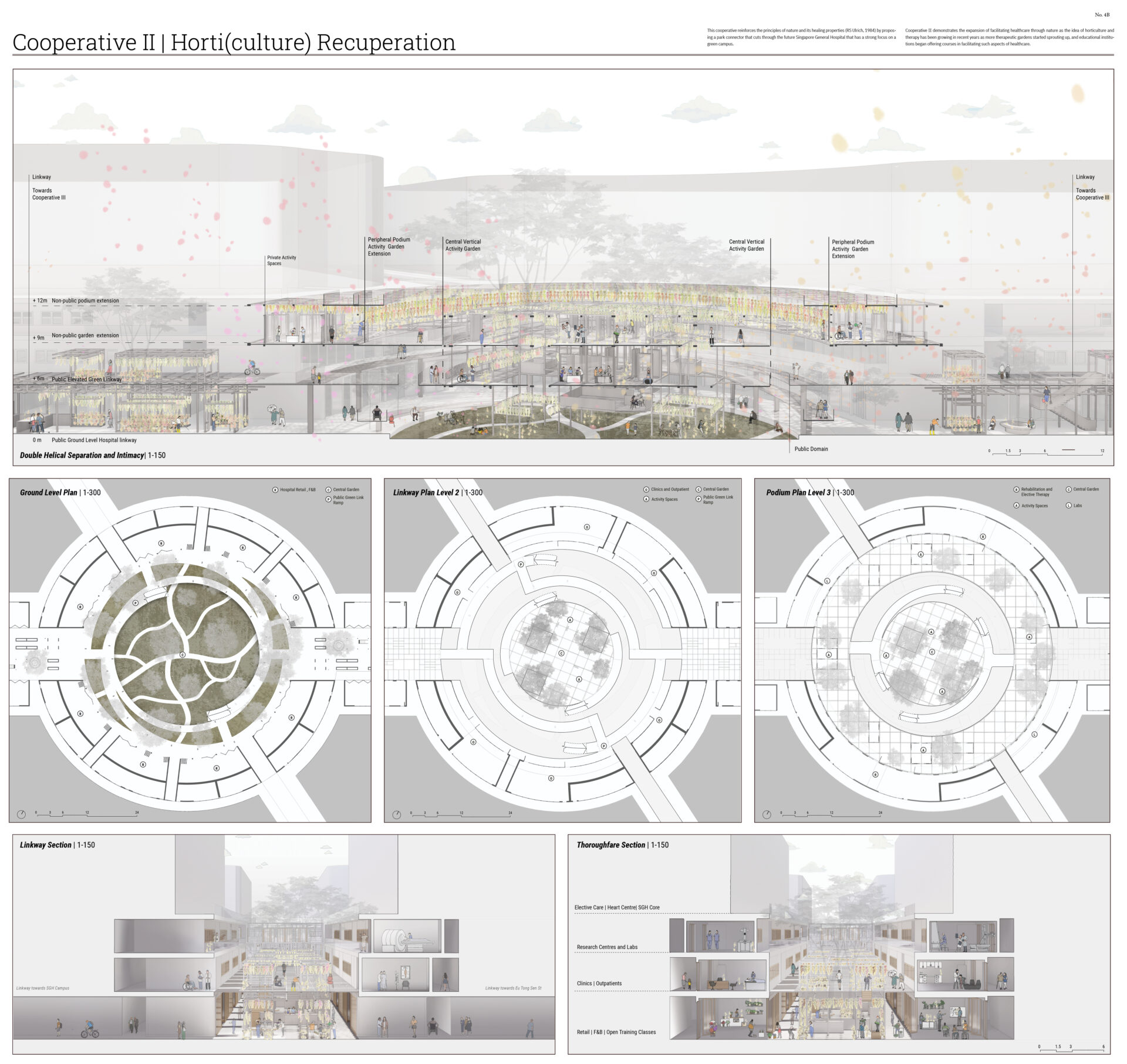

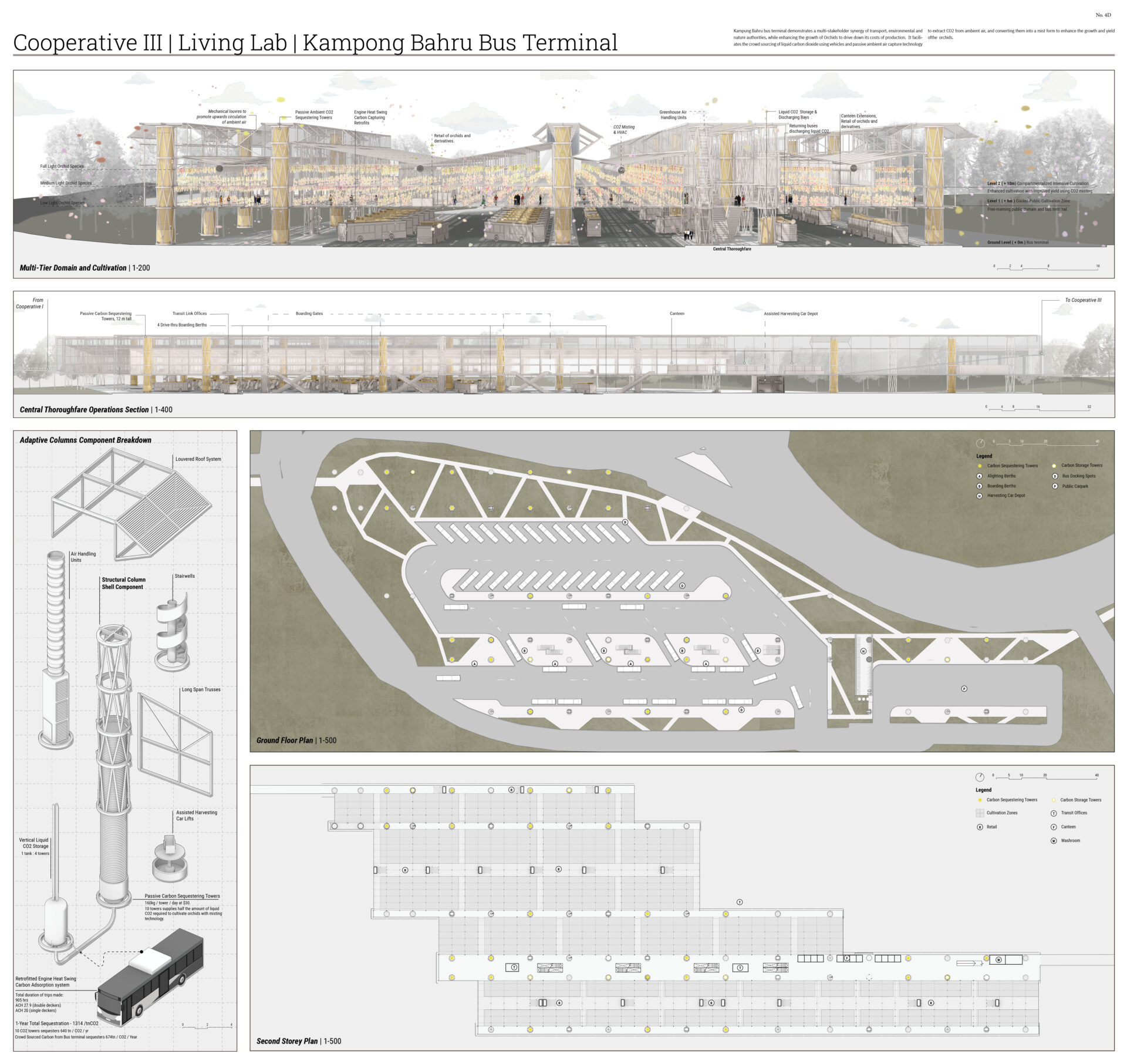
Supervisor's comments:
While the symbolic meaning of the orchid as the national flower is widely known, its multiple values has yet been well explored, nor has the threat to its local cultivation received sufficient attentions. This thesis offers a beautiful innovation that not only allows the orchid’s potentials for horticultural therapy and micronutrients provision to be more fully released, but also transform these potentials into different cooperative activities for community building and collective co-production. It is a demonstration of the power of successful marriage between social innovation and architectural creation, underpinned by great care and responsibility.
- Senior Lecturer Zhang Ye (Dr.)